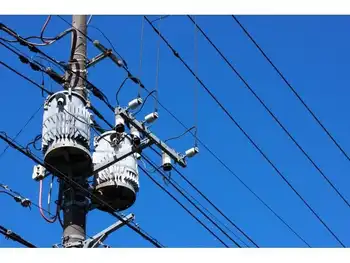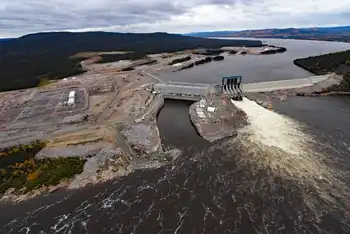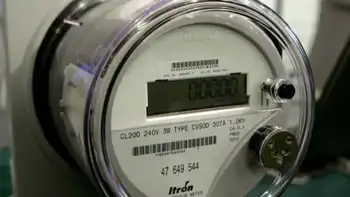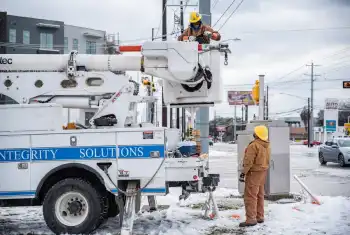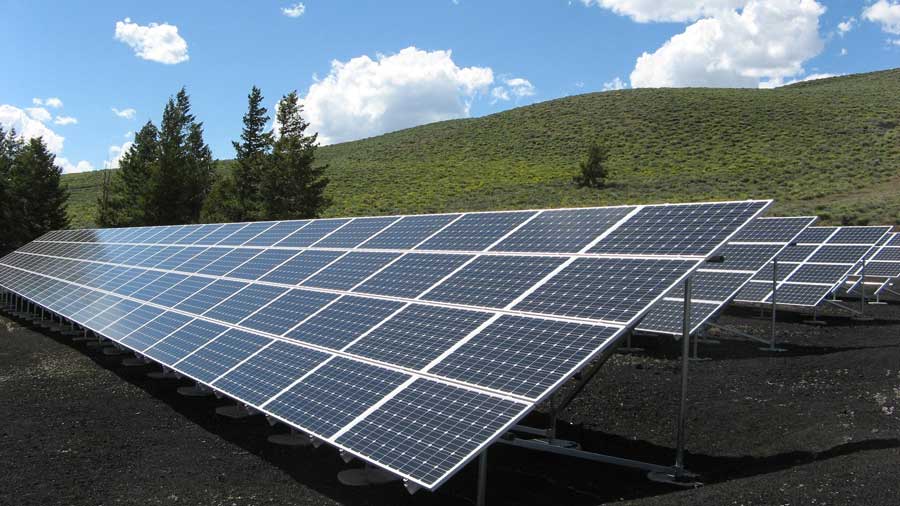Future of Clean Coal Power Tied to the Success of Carbon Capture and Storage
By Scientific American
NFPA 70e Training
Our customized live online or in‑person group training can be delivered to your staff at your location.

- Live Online
- 6 hours Instructor-led
- Group Training Available
The dirty rock provides half of the electricity in the U.S. and its role (or the nation's dependence on it) is likely to grow, according to a new report from the Massachusetts Institute of Technology. "It's cheap, there's lots of it and there's lots of it in places with high demand, namely the U.S., China and India," says co-author and M.I.T. physicist Ernest Moniz. "Sequestration," he adds, "is a key enabling technology for coal use in a carbon-constrained world."
Sequestration, as envisioned in the report, involves capturing the CO2 from coal-fired power plants, compressing it into a liquid and injecting it deep beneath the earth into old oil fields or saline aquifers.
There, according to geologists, the CO2 would be trapped by sealing cap rock to prevent it from seeping back to the surface and into the air. It is relatively cheap to get it there, the report says. The difficulty is capturing it at the power plant without sapping too much energy or pushing electric costs up too high. For example, one 500-megawatt coal-fired power plant (there are the equivalent of 500 of these in the U.S. and China is building the equivalent of two of them each week) produces three million tons of CO2 annually. Adding carbon capture technology to that plant sucks up 40 percent of the power it can produce and adds at least 2.7 cents to the retail price of that electricity.
"If you capture most of the CO2 and sequester it for the 50-year life of the plant, you're talking about one billion barrels of supercritical CO2," Moniz says. "That's a pretty big reservoir."
To date, the largest sequestration project — the Sleipner gas field in the North Sea—slurps up one million tons of CO2 per year (11 million or so since inception) and relies on sonar to detect any major leaks. "So far, so good," says Howard Herzog, principal research engineer at M.I.T.'s Laboratory for Energy and the Environment. "The problem with Sleipner is it's not as instrumented as we would like."
In other words, it does not have the kind of in-place monitoring systems critical to understanding the true workings of liquid CO2 stored underground.
Nor is it big enough to help understand what would happen if even larger amounts of supercritical CO2 were pumped underground. In fact, it would take 3,600 projects of Sleipner's scale — which is the largest such project underway — to reduce current carbon dioxide emissions from coal by less than half, the report says. But even the small projects are already turning up surprises, such as the relative permeability of various rocks and the ability of CO2 to mix with saline and form carbonic acid, which eats away surrounding rock.
And, of course, no one knows exactly how long the carbon dioxide could be contained. "The long-term, chemical fate of CO2 remains to be understood," Moniz notes. "It's like a mortgage. It gets us out of the problem in the 21st century, spreading it out over a longer time and not breaking the budget."
U.S. companies have already planned several demonstrations of such carbon capture and sequestration. Among the 25 projects authorized by the federal Department of Energy, First Energy plans to install a new carbon capture technology on its R. E. Burger power plant in Ohio and then partner with engineering firm Battelle to test pumping it 7,000 feet beneath the surface. But none of these projects is of yet sufficiently large scale and that, the report's authors argue, is because there is no cost associated with emitting CO2. "Right now, it's free to vent carbon dioxide to the atmosphere," says S. Julio Friedmann, a geologist and head of the carbon management program at Lawrence Livermore National Laboratory.
Emitting CO2 would need to cost at least $30 per metric ton via a carbon tax or a cap and trade market for any of the various carbon capture and sequestration technologies to be economically competitive, according to the report. At that price, coal, natural gas, nuclear and renewable electricity sources like wind become roughly cost-competitive, Moniz says.
"There is not going to be one silver bullet," he adds. "And without much improved energy efficiency, we have no chance of meeting targets like doubling or less than doubling preindustrial levels of CO2 in the atmosphere," as many scientists have urged as a goal to prevent dangerous climate change.
Ultimately, it is such efforts to combat climate change that drive sequestration needs, and a 2006 M.I.T. poll of 1,200 Americans indicates that they are willing to pay an average of $21 a month for solutions to this global problem. The conundrum is that there is nothing to pay for as of yet when it comes to coal. No "clean coal" technology has been demonstrated with carbon capture and storage and no large-scale sequestration projects have been undertaken. It also remains unclear where and exactly how much storage capacity the U.S. has.
"Pore volume that you can use to hold CO2 is a new natural resource," Friedmann says of the underground reserves that might be suitable to contain liquid carbon dioxide. "What is the capacity? What does it look like? How fast can you inject?"
In short, the report finds that coal will remain the electricity-generation king and geologic sequestration is the solution best suited to minimize the attendant carbon dioxide pollution. This will require building a liquid CO2 infrastructure comparable to the national highway system as well as assessing which coal-burning technologies work best with which carbon capture technologies. In other words, the way such carbon capture and sequestration will work remains as hazy as the smog coal-fired power plants produce but it needs to become clear quickly if the world plans to continue burning such fossil sunlight.





